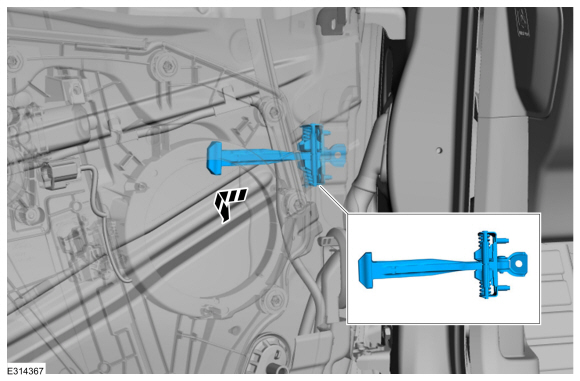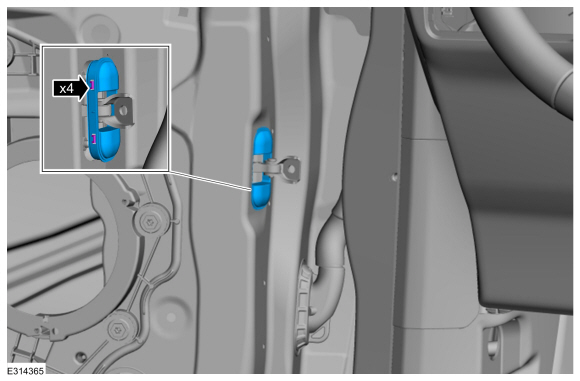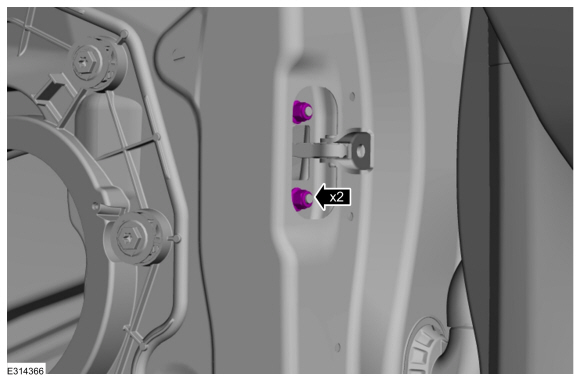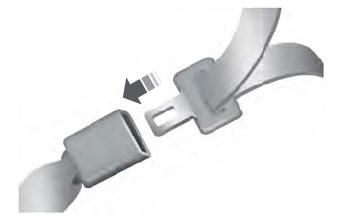Ford Escape 2020-2025 Service Manual / Chassis / Suspension / Suspension System - General Information / General Procedures - Ride Height Measurement
Ford Escape: Suspension System - General Information / General Procedures - Ride Height Measurement
Special Tool(s) / General Equipment
| Surface Gauge |
Check
NOTE: Make sure that the vehicle is positioned on a flat, level surface and the tires are inflated to the correct pressure. Vehicle should have a full tank of fuel.
-
Before measuring ride height check:
-
Tires are inflated to the correct pressure.
-
Vehicle should have a full tank of fuel.
-
All fluids at proper levels.
-
No cargo inside the cab or bed.
-
Inspect for aftermarket equipment. Check for
aftermarket changes to the steering, suspension, wheel and tire
components (such as competition, heavy duty, etc.).
-
Tires are inflated to the correct pressure.
-
Jounce front and rear suspension vigorously to allow the vehicle to settle.
Ride Height Measurement — Front
-
-
Ride height = 3-2
-
Measure the distance between the flat level
surface and the center of the lower arm forward bolt (measurement 2).
Use the General Equipment: Surface Gauge
-
Measure the distance between the flat level
surface and the center of the ball joint bolt (measurement 3).
Use the General Equipment: Surface Gauge
-
Ride height = 3-2
 |
-
With the surface gauge positioned on a flat, level
surface, record the measurement of the surface gauge position
(measurement 2) and (measurement 3).
Use the General Equipment: Surface Gauge
 |
-
Subtract measurement 2 from measurement 3 to obtain the front ride height.
Ride Height Measurement — Rear
-
-
Ride height = 2-3
-
Measurement 2
-
Measurement 3
Use the General Equipment: Surface Gauge
-
Ride height = 2-3
 |
-
Measure the distance between the flat level surface
and the center of the rear lower arm inboard bolt (Cam Adjuster)
(measurement 2).
Use the General Equipment: Surface Gauge
-
Measure the distance between the flat level surface
and the center of the rear lower arm outboard bolt (measurement 3).
Use the General Equipment: Surface Gauge
-
Subtract measurement 3 from measurement 2 to obtain the rear ride height.
Refer to: Specifications (204-00 Suspension System - General Information, Specifications).
 General Procedures - Rear Toe Adjustment
General Procedures - Rear Toe Adjustment
Special Tool(s) /
General Equipment
Wheel Alignment System
Adjustment
NOTICE:
Do not use any tools or equipment to move the wheel and tire
assembly or suspension components while checking for relative movement...
Other information:
Ford Escape 2020-2025 Service Manual: Removal and Installation - Passenger Airbag
Removal WARNING: The following procedure prescribes critical repair steps required for correct supplemental restraint system operation during a crash. Follow all notes and steps carefully. Failure to follow step instructions may result in incorrect operation of the supplemental restraint system and increases the risk of serious personal injury or death in a crash. NOTE: Dual ..
Ford Escape 2020-2025 Service Manual: Removal and Installation - Camshaft Position (CMP) Sensor
Materials Name Specification Motorcraft® Silicone Brake Caliper Grease and Dielectric CompoundXG-3-A ESA-M1C200-AESE-M1C171-A Removal NOTE: Removal steps in this procedure may contain installation details. NOTICE: Do not pull the engine appearance cover forward or sideways to remove. Failure to press straight upward on the underside of the cover at the..
Categories
- Manuals Home
- 4th Generation Ford Escape Owners Manual
- 4th Generation Ford Escape Service Manual
- Plug-In Hybrid Electric Vehicle Drive Modes
- Rear View Camera
- Removal and Installation - All-Wheel Drive (AWD) Module - 1.5L EcoBoost (132kW/180PS) – I3 (Y1)/2.0L EcoBoost (177kW/240PS) – MI4
- New on site
- Most important about car
Fastening the Seatbelts

Copyright © 2025 www.fordescape4.com

